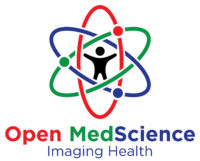Eco-Friendly Radiology
The increasing global focus on sustainability has led many industries to reconsider their environmental impact, and radiology is no exception. As an essential component of modern healthcare, radiology contributes to carbon emissions, electronic waste, and high energy consumption. However, adopting eco-friendly practices can significantly reduce its environmental footprint without compromising patient care.
Energy Efficiency in Radiology
Medical imaging technologies such as MRI, CT, and PET scanners consume substantial amounts of electricity. Many hospitals rely on outdated machines that require continuous power, leading to excessive energy use. Upgrading to newer, energy-efficient imaging equipment can help lower consumption. Additionally, simple measures such as switching off idle machines, optimising scheduling to minimise scanner idle time, and investing in renewable energy sources for hospitals can make a significant difference.
Reducing Radiation Dose and Optimising Imaging Protocols
Optimising imaging protocols to minimise unnecessary scans not only reduces radiation exposure to patients but also decreases electricity use. Techniques such as iterative reconstruction in CT imaging allow for high-quality images with lower radiation doses. Furthermore, ensuring that each scan is clinically justified can prevent redundant imaging and reduce the overall demand for high-energy-consuming equipment.
Digital Transformation and Paperless Workflows
Traditional radiology departments rely heavily on physical films and printed reports, contributing to paper waste and chemical pollution from film processing. The transition to digital radiology and Picture Archiving and Communication Systems (PACS) eliminates the need for film, enabling hospitals to reduce their environmental impact. Digital workflows improve efficiency, reduce costs, and allow remote access to imaging, which can decrease unnecessary patient travel.
Sustainable Waste Management
Radiology departments generate various forms of waste, including obsolete imaging equipment, single-use plastics, and contrast agents. Proper disposal and recycling of outdated equipment can prevent hazardous materials from entering landfill sites. Additionally, using environmentally friendly contrast media with lower toxicity and biodegradable packaging can reduce the ecological burden. Some hospitals have started recycling contrast bottles and implementing closed-loop recycling systems for plastics used in imaging procedures.
Eco-Conscious Procurement
Sustainable purchasing decisions can further support green radiology initiatives. Hospitals should prioritise suppliers committed to reducing carbon emissions, minimising packaging waste, and offering energy-efficient imaging devices. Choosing refurbished or remanufactured equipment can also extend the lifespan of imaging technology while reducing the environmental impact associated with manufacturing new machines.
Encouraging a Green Culture in Radiology
Creating awareness among radiology staff and patients about sustainable practices can foster a culture of environmental responsibility. Simple actions, such as reducing unnecessary printouts, promoting telemedicine consultations, and encouraging sustainable transport options for staff and patients, contribute to a greener healthcare system.
By integrating sustainability into Eco-Friendly Radiology practices, healthcare institutions can reduce their carbon footprint while maintaining high standards of patient care. With continued innovation and commitment, eco-friendly radiology can become a fundamental part of the broader movement towards a sustainable healthcare system.
You are here:
home » Eco-Friendly Radiology


